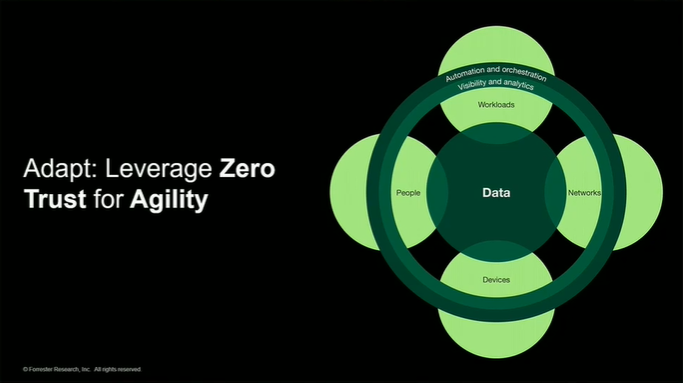The cloud is becoming the primary place where work gets done. By 2025, Gartner estimates that enterprise spending on public cloud computing will overtake traditional IT hardware. Why? One reason is that cloud platforms have evolved to the point that they can now offer the performance necessary for mission-critical databases and applications or block data. Moreover, there are multiple public cloud options from major players like Oracle Cloud, AWS, Microsoft Azure, and others, which enables organizations to choose the right cloud platform for their needs.
Unfortunately, “how are you planning to move your data to the cloud” is often overlooked. Data migration for block data has always been a complex process, which still applies to a cloud environment. Relying on “free tools” usually has unforeseen costs and risks that turn a digital transformation into a digital disaster.
In this post, we’ll explore why data migration is crucial to your cloud strategy, the hidden costs of free data migration tools, and best practices to choose the right cloud migration solution for you.

Hosting data in public clouds has long been more flexible than on-premises data centers. In the past, public clouds were best suited to storing unstructured data that doesn’t have the same robust performance requirements associated with mission-critical block data. Today, the largest public cloud providers have created an affordable, performance-driven solution that rivals many on-premises options.
This affordable and performant cloud alternative poses a challenge: How do you move your data to these public clouds? Once it’s there, how do you move the data between clouds or even bring it back on-premises? These are questions of data mobility, and how you answer them is crucial to the success of your cloud strategy. For your multi-cloud infrastructure strategy to work, you need to be able to move your block data to the cloud, between clouds, and even to a hybrid cloud. You need to be able to move your data whenever without lengthy downtimes, security compromises, or impact on your operations.
Data mobility is often much more complicated than storage experts are initially told. Some vendors offer free data migration tools to move your block data to their clouds to soften this blow and win your business. It sounds like an easy win—a free migration tool means you get your essential data migrated from your data center to the right cloud without additional spending. Unfortunately, ‘there is no such thing as a free lunch.’ Free cloud migration tools are not without cost. Let’s examine why.
1. Cloud migration is more complex than pressing a button. Your IT or Storage experts will need to oversee the process to ensure data is properly stored and configured on the new cloud. Free tools often need more specificity and manual interventions to ensure all your data is in the right place. Ready to spend some quality time LUN matching?
2. Business application downtime. While your team is double-checking the free migration tool’s moves, your block data isn’t going to be online or accessible to your business applications. Downtime is expensive, and the disruption to your everyday operations isn’t going to win you any awards with the business units.
3. Additional bandwidth expenses have a way of creeping in. Even though your cloud provider isn’t charging for data migration, moving that data is not free of cost. Migrating huge data volumes can easily exceed your data caps from telco providers, which means cost overage. In addition, significant bandwidth is required to migrate block data, which can slow other business operations that rely on internet connections.
One of the biggest complaints we hear from systems integrators and large global organizations is the length of time their previous data migrations have taken. In one case, a hotel industry giant could only migrate five percent of their total data over an entire year. The manual processes, downtime considerations, and speed of free tools – made it impossible for the organization to complete its digital transformation. The result was millions spent on additional maintenance costs for legacy storage and huge delays in bringing their new storage environment online.
Your block data is essential to your business operations, so it deserves a data mobility solution that handles it with care and precision. Here’s how to evaluate data mobility solutions to find the right fit:
1. Vendor agnostic for data mobility. If you’re going to rely on a multi-cloud strategy, you need to know your block data migration solution has any-to-any compatibility across public clouds. You want to avoid being locked into one cloud or storage technology because of your data mobility constraints. You need a solution that works across any cloud or any storage technology.
2. No (or near-zero) downtime. Pay attention to how your potential cloud migration solution handles downtime. Any time your data is offline can be disruptive to your business. You want a data mobility solution that can move your block data and limits any downtime to seconds … or less.
3. Optimal data protection. Hackers and bad actors know that data is especially vulnerable when it’s in transit outside of your data center’s firewall. Make sure your cloud migration solution has the security you need to keep your data in motion safe.
4. Deduplication and compression to limit cost. Remember that bandwidth and data cap costs are part of the budget for data migration. Look for cloud migration solutions that have deduplication and use efficient compression to move your block data quickly and cost-effectively.
5. Automation to schedule around database and application usage. Automation is critical to effective data migration. It reduces human error and makes it easier to avoid downtime during business hours—schedule disruptive migration tasks late at night or on weekends.
By Mark Greenlaw





